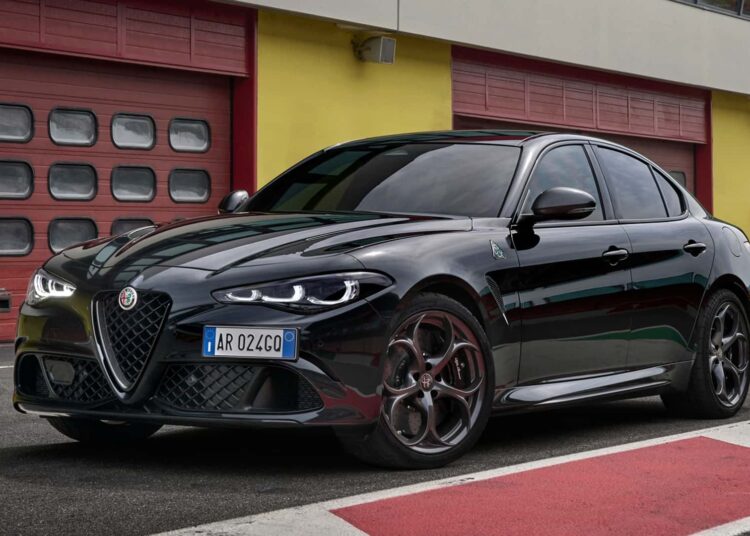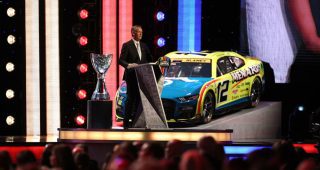We can only imagine that running Stellantis must be one of the most difficult jobs in the automotive industry. Having to manage no fewer than 14 brands across the entire global is not for the faint-hearted. It’s especially true when you take into account there’s some overlap between several companies. Despite the risk of sales cannibalization, the corporate umbrella isn’t changing.
In a new statement, Stellantis says it’s “not pursuing splitting off any of its brands” and is reaffirming its commitment to all 14 of them. In addition, the initial promise made in 2021 to keep all of the “powerful, iconic brands” is still in place. That means the likes of Lancia, DS Automobiles, Abarth, and the rest of the gang will remain part of the conglomerate until at least the end of the decade.
The succinct press release from Stellantis is a response to a video recently posted by Walter P. Chrysler’s great-grandson on YouTube. Ideally, Frank B. Rhodes, Jr. would want Dodge and Chrysler out of Stellantis to form a new Chrysler Corporation. However, that’s easier said than done since he is also seeking investors to make it happen. In light of the new announcement made by Stellantis, the two American brands are staying where they are.
This reaffirmed long-term commitment from Stellantis comes only a month after the CEO hinted unprofitable brands could be killed. Carlos Tavares declared that automakers hemorrhaging money will get the axe: “If they don’t make money, we’ll shut them down. We cannot afford to have brands that do not make money.”
Immediately after this statement was made, Reuters cited industry experts saying Maserati could be up for sale and that either Lancia or DS Automobiles could be phased out. However, it seems none of this is true since all 14 will continue under Stellantis. It really wouldn’t make sense to terminate Lancia now considering the Italian brand is finally getting new models and is once again expanding its presence outside its domestic market.

Maserati is also freshening up its lineup, so it needs time to prove its worth. As for DS, it’s labeled by Stellantis as a “premium” brand alongside Alfa Romeo and Lancia whereas Maserati is “luxury.” The French marque never took off since it became a separate brand in 2014, and many are still trying to understand why it was spun off from Citroën in the first place. It would’ve made more sense to keep DS as a high-end trim level.
Abarth as we know it has been an independent entity since 2007 and has been selling amped-up Fiats. Again, why not just use Abarth as the sporty trim? This brings us to our next question: What is with the obsession some car companies have with launching multiple sub-brands?
The situation on the US side is just as complicated seeing as how Chrysler is now merely a shadow of its former glory. Having killed the aging 300C sedan, it’s down to a single model–the Pacifica minivan. Dodge’s portfolio isn’t overflowing with products either but at least there’s greater variety after adding the Hornet, albeit it’s a reskinned Alfa Romeo Tonale. The new Charger comes with electric and inline-six power but the V-8 is sadly dead. You can still get a HEMI in the Durango but the Hellcat Silver Bullet is the epilogue.

As for the other brands we didn’t mention, they’re too big to fail. Yes, that includes Alfa Romeo. We just can’t imagine the brand going away. A new Stelvio is coming next year, with the next-gen Giulia to follow in 2026. The SUV and sedan duo will be underpinned by the same platform that Dodge used for the new Charger but with a different design. Earlier this year, Alfa CEO Jean Philippe Imparato told us the new Giulia looks “the bomb.”
Jeep, Ram, Citroën, Fiat, Opel/Vauxhall, and Peugeot should be just fine as they are competitive brands, despite lagging sales in some markets. Let’s keep in mind that beyond these 14 companies, Stellantis also has a 51% share in Leapmotor International, a joint venture with Leapmotor in which it has a 20% share. China-made EVs are already in Europe and will be exported to the Middle East & Africa, Asia Pacific, and South America from the end of 2024.
Read the full article here























